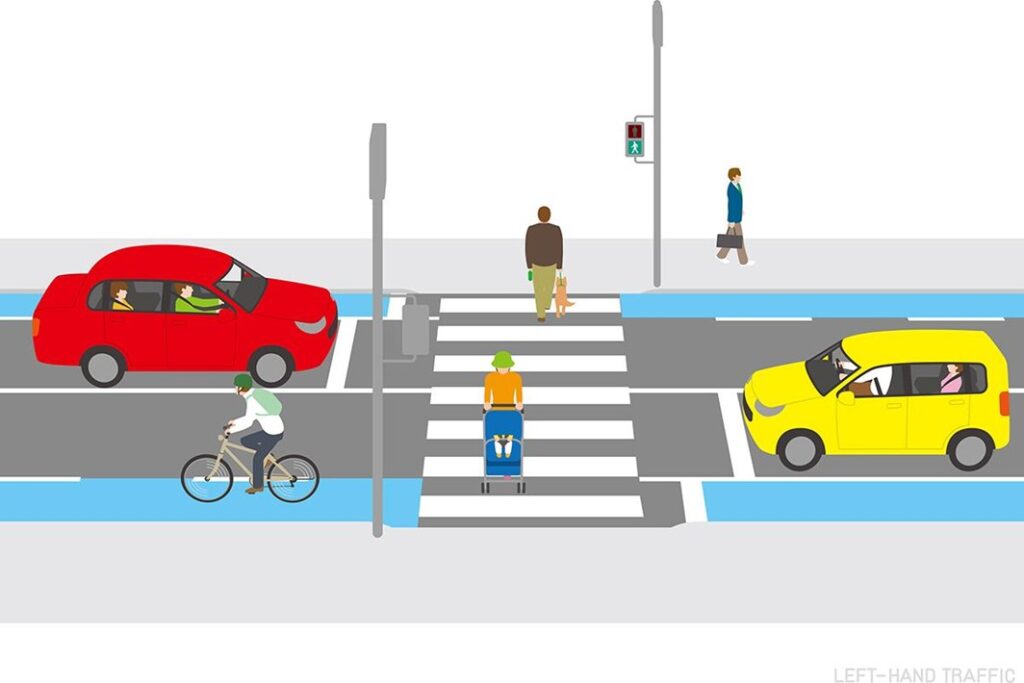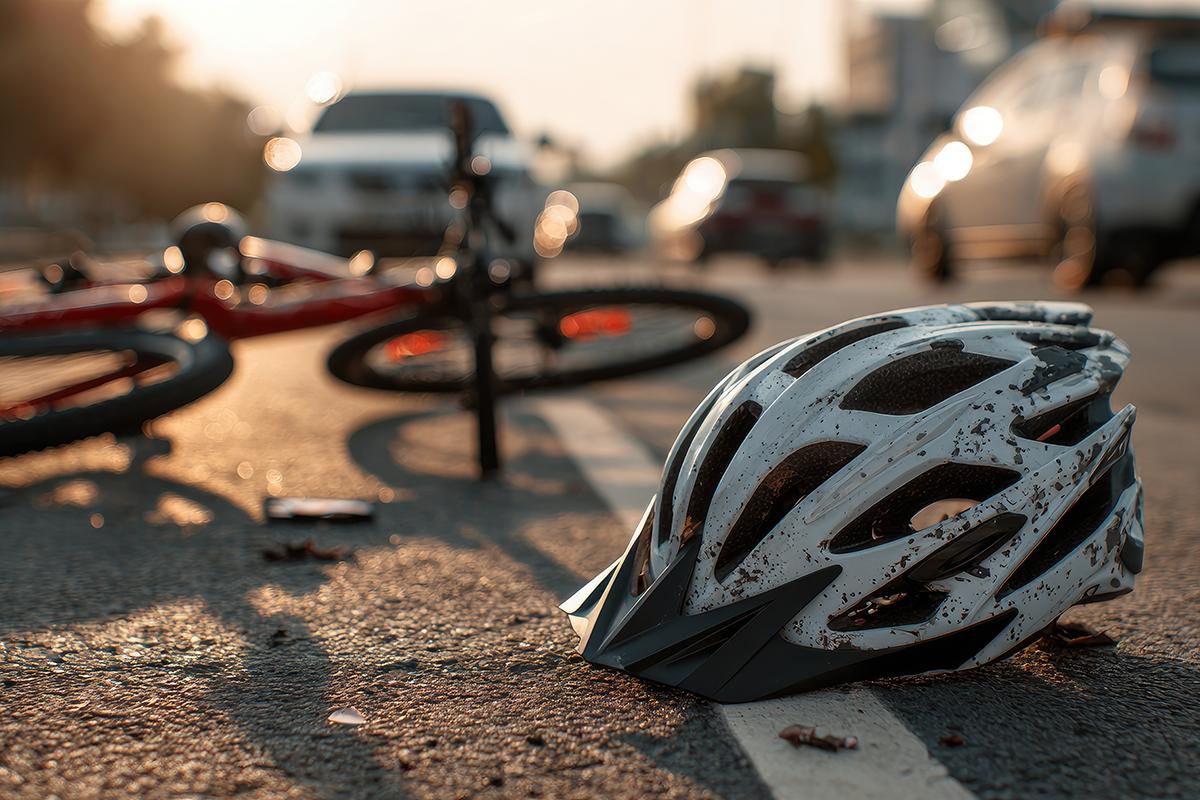Your Complete Guide to Cycling Rules & Etiquette in Japan
Japan is a country where you can truly enjoy diverse nature and rich culture by bicycle. From breathtaking seasonal landscapes and historic townscapes to stunning coastal views and majestic mountain vistas, there’s a unique charm waiting for you, whether you cycle through vibrant cities or tranquil rural areas.
However, it’s also true that some roads can be narrow or have heavy traffic, and Japan has specific traffic rules and manners that may differ from what overseas cyclists are accustomed to. These unique aspects might not always make for the most comfortable riding environment if you’re unfamiliar with them.
This guide is designed to help you navigate Japan’s roads safely and comfortably. Here, we’ll explain the fundamental rules and essential etiquette you need to know to ensure a safe and enjoyable cycling experience in Japan.

Riding on the Roadway is the General Rule
Riding on the Roadway is the General Rule
In Japan, bicycles are legally classified as “light vehicles” under the Road Traffic Act. This means that, as a general rule, you are required to ride on the roadway (the street where cars drive).
Exceptions for Sidewalk Riding:
However, there are specific situations where you are permitted to ride on the sidewalk:
- If riding on the roadway is deemed dangerous, such as on very narrow roads with heavy traffic, or through construction zones.
- When signage explicitly permits or designates sidewalk riding for bicycles.
Important Rules When Riding on Sidewalks:
If you do ride on the sidewalk, you must:
- Proceed slowly (at a walking pace).
- Give absolute priority to pedestrians. Pedestrians always have the right of way.
- Use your bell only when absolutely necessary to alert pedestrians of your presence. Avoid startling pedestrians by ringing your bell directly behind them.
Roads Where Cycling May Be Prohibited:
Be aware that even on roadways, cycling may be prohibited on certain heavily trafficked roads for safety reasons. Always pay close attention to road signs to ensure you are riding in allowed areas.

Japan’s Roads Follow “Left-Hand Traffic”
This is a fundamental rule in Japan: all traffic, including bicycles, must always keep to the left side of the road.
- Riding on the right side of the road (against traffic) is extremely dangerous and can lead to serious accidents, such as head-on collisions with other cyclists or vehicles.
- When riding on the roadway, maintain your position on the leftmost edge of the road (the shoulder or roadside area).
- Even when permitted to ride on the sidewalk, you should still keep to the left side of the sidewalk and proceed carefully, ensuring you do not obstruct pedestrians.

Types of Traffic Signals & How to Obey Them
Bicycles are legally obligated to obey traffic signals in Japan.
- When riding on the roadway: Follow the vehicle traffic signals.
- When riding on the sidewalk: Follow the pedestrian traffic signals that are facing you.
- Dedicated Bicycle Signals: If there are dedicated bicycle signals, the green light may appear at a different timing than for vehicles or pedestrians.
Safe Turning at Intersections
Left Turns
- For left turns, approach the intersection by keeping to the far left edge of the roadway.
- Be extremely cautious of “left-turn sweep” accidents involving large vehicles (e.g., trucks, buses). It is particularly important not to ride alongside a vehicle that is turning left, as you may be in their blind spot.
Right Turns (Two-Stage Right Turn)
- For right turns, the “two-stage right turn” (二段階右折, nidankai usetsu) is the general rule for bicycles.
- Proceed straight across the intersection as if you were going straight.
- Once you reach the stop line on the opposite side of the intersection, turn your bicycle to face the direction you want to go.
- If there is a sign indicating a two-stage right turn, you must obey it. Even if there isn’t a specific sign, it is highly advisable to choose the two-stage right turn for your safety, especially on busy intersections.
Helmet Use (Recommended)
Wearing a helmet is strongly encouraged, though it’s not legally mandatory for adult cyclists in Japan. It means there’s an “endeavor obligation” for you to do so for your safety. Some tourist areas or rental shops may offer helmet rentals.
Actions Prohibited by Law
The following actions are strictly prohibited by law while cycling, as they significantly compromise your safety and can result in fines or other penalties:

- Riding with an umbrella.
- Operating your smartphone while cycling (e.g., texting, talking, looking at maps).
- Using earphones or headphones that prevent you from hearing your surroundings (e.g., blocking out ambient sounds).
These prohibitions are in place to ensure your safety and the safety of others on the road.
Bicycle Parking
- Always use designated bicycle parking areas.
- Especially around train stations, bicycles left unattended in unauthorized spots may be impounded as illegally parked or abandoned bicycles.
- When parking, don’t forget to lock your bicycle. Even in Japan, bicycle theft is common, particularly in urban areas.
◇
By understanding and adhering to the basic rules and etiquette introduced in this guide, you can ensure a safe, smooth, and enjoyable cycling adventure in Japan. Please take the time to review this information beforehand and confidently immerse yourself in a unique cycling experience that only Japan can offer. Enjoy your ride!
- HOME
- Travel Tips for Cyclists
- Your Complete Guide to Cycling Rules & Etiquette in Japan




